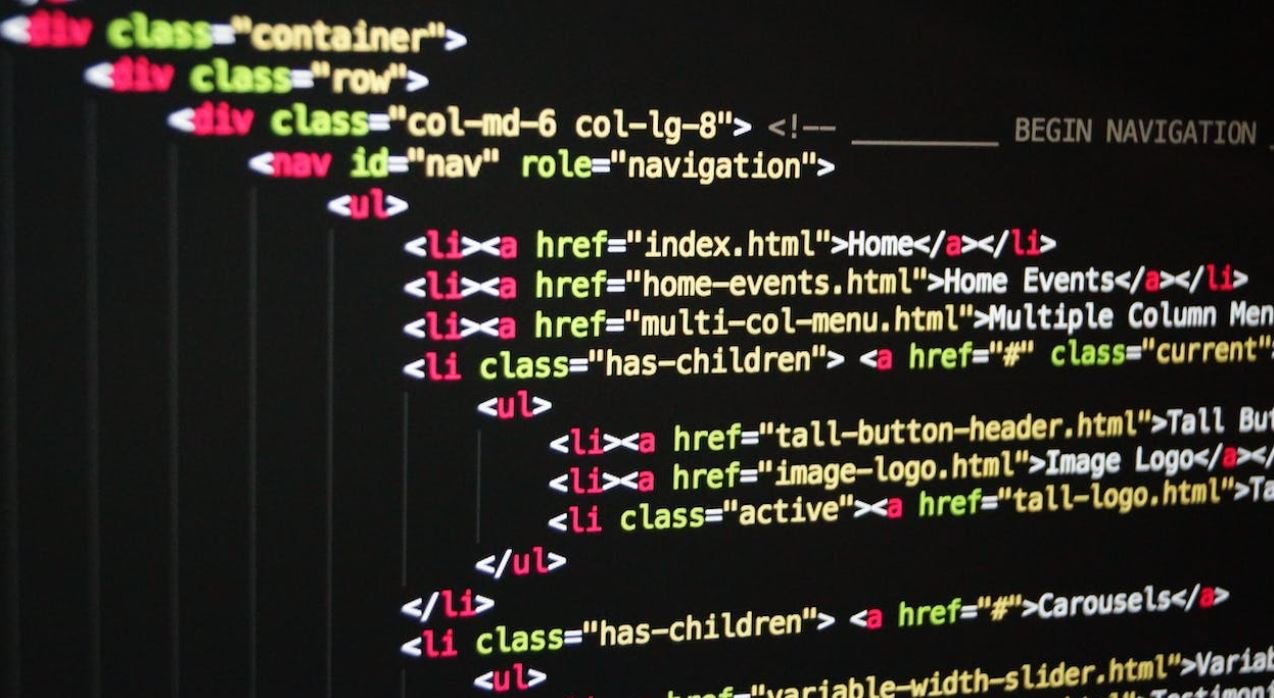Who Built AI?
Artificial Intelligence (AI) has revolutionized various industries and significantly impacted the way we live and work. But have you ever wondered who developed this remarkable technology? Let’s delve into the origins of AI and explore the brilliant minds behind its creation.
Key Takeaways
- AI was built by a collective effort of researchers and scientists.
- Important contributors include Alan Turing, John McCarthy, and Geoffrey Hinton.
- AI development continues to evolve with advancements in deep learning and neural networks.
The Pioneers of AI
AI can be traced back to the 1950s when the concept of intelligent machines first emerged. **Alan Turing**, known for his work on the Enigma machine during World War II, laid the foundations for AI with his influential paper “Computing Machinery and Intelligence.” This paper proposed the famous Turing Test, which assesses a machine’s ability to exhibit intelligent behavior indistinguishable from a human.
Another notable figure in AI’s history is **John McCarthy**, who coined the term “Artificial Intelligence” and organized the Dartmouth Conference in 1956, often considered the birth of AI as a field. McCarthy’s vision drove the field forward, emphasizing the development of “thinking machines” capable of problem-solving and learning.
AI Advances in the Modern Era
Over the years, numerous advancements have propelled AI into the modern era. **Geoffrey Hinton**, along with his colleagues, made groundbreaking contributions to deep learning, a subset of AI that focuses on training neural networks with multiple hidden layers. Hinton’s work revolutionized speech recognition and image classification, making significant strides in the field.
AI is thriving today due to a combination of factors, including increased computational power, availability of vast amounts of data, and breakthroughs in algorithms. These advancements continue to push the boundaries of what AI can achieve. *Machine learning algorithms can now process vast quantities of data and recognize patterns that can help diagnose diseases or predict market trends.*
A Snapshot of AI Developments
| Year | Development |
|---|---|
| 1950 | Alan Turing publishes “Computing Machinery and Intelligence,” introducing the concept of the Turing Test. |
| 1956 | John McCarthy organizes the Dartmouth Conference, propelling AI as a field. |
| 2012 | Geoffrey Hinton’s work demonstrates the power of deep learning in image classification tasks. |
AI’s Ongoing Evolution
The journey of AI is far from over. Ongoing research and development drive continuous improvements and innovations in the field. Deep learning and neural networks are at the forefront of AI advancements, enabling machines to process complex information and make decisions with unprecedented accuracy. The future of AI holds great promise, with applications in healthcare, finance, autonomous vehicles, and more.
Conclusion
AI, a transformative technology, was built through the collective efforts of brilliant researchers and scientists. From its early pioneers like Alan Turing and John McCarthy to modern contributors such as Geoffrey Hinton, the field has come a long way. With ongoing advancements, AI continues to shape our world and unlock new possibilities across industries.

Common Misconceptions
Who Built AI?
There are some common misconceptions surrounding the development of artificial intelligence (AI). One of the most prevalent misconceptions is that AI was solely built by a single person or company. However, AI is a product of collaborative efforts and contributions from various individuals and organizations.
- AI is not the work of a single individual or company, but rather a result of collective efforts.
- Many researchers and scientists have contributed to the development of AI over several years.
- AI development involves interdisciplinary collaboration, including experts from fields such as computer science, mathematics, and linguistics.
Another common misconception is that AI was created overnight and emerged fully formed. In reality, AI has evolved gradually over time, with incremental advancements and breakthroughs contributing to its development.
- AI has been a work in progress for several decades, with improvements and advancements occurring gradually.
- The concept of AI dates back to the 1950s, and since then, researchers and scientists have been building upon previous findings.
- AI has gone through various stages of development, from rule-based systems to machine learning and deep learning algorithms.
Many people believe that AI operates autonomously with human-like consciousness and decision-making abilities. In reality, AI is designed and programmed by humans, and its intelligence is limited to the tasks it has been specifically trained for.
- AI systems are built and programmed by humans, who define the objectives and parameters of their learning.
- AI’s intelligence is narrow, focused on specific tasks, and lacks human-like consciousness or general reasoning ability.
- AI relies on data and patterns to make decisions, but it does not possess subjective experiences or emotions.
There is a misconception that AI is always accurate and infallible. However, like any other technology, AI is prone to biases, errors, and limitations. The performance of AI systems depends on the quality and diversity of the data on which they were trained.
- AI can be biased due to the data it was trained on, potentially reflecting existing societal biases.
- AI can struggle with context and lack common sense reasoning, leading to errors or incorrect conclusions.
- AI systems require continuous monitoring and refinement to improve their accuracy and efficiency.
Lastly, there is a misconception that AI will replace humans in various fields, leading to widespread job losses. While AI has the potential to automate certain tasks, it is more likely to augment human capabilities rather than completely replacing them.
- AI can automate repetitive and mundane tasks, freeing up humans to focus on more creative and complex work.
- AI can enhance productivity and efficiency, but it still requires human oversight and decision-making in many domains.
- AI is likely to create new job opportunities in emerging fields and require humans to adapt their skills to work alongside these technologies.

Who Built AI?
Around the world, teams of brilliant minds have contributed to the development of Artificial Intelligence (AI). This remarkable technology, often associated with futuristic concepts, has come a long way since its inception. Here are ten intriguing tables highlighting key aspects of the individuals and organizations who played a significant role in building AI.
The AI Innovators
| Name | Field | Contribution |
|---|---|---|
| Alan Turing | Mathematics | Developed the concept of a universal machine, laying the foundation for AI. |
| John McCarthy | Computer Science | Coined the term “Artificial Intelligence” and organized the Dartmouth Conference. |
| Marvin Minsky | Cognitive Science | Contributed to the development of neural networks and symbolic AI. |
| Geoffrey Hinton | Computer Science | Pioneered the use of neural networks, particularly convolutional neural networks. |
| Yann LeCun | Computer Science | Significantly contributed to the field of deep learning and co-developed convolutional neural networks. |
Leading AI Companies
| Company | Headquarters | AI Advancements |
|---|---|---|
| Mountain View, CA, USA | Developed Google Assistant, TensorFlow, and achieved breakthroughs in natural language processing. | |
| IBM | Armonk, NY, USA | Created Watson, an AI system capable of understanding unstructured data and competing on Jeopardy! |
| OpenAI | San Francisco, CA, USA | Pioneered GPT-3, one of the most advanced natural language processing models. |
| Microsoft | Redmond, WA, USA | Developed Azure AI, Cognitive Services, and collaborated on DeepMind’s AlphaGo. |
| Menlo Park, CA, USA | Contributed to computer vision research, facial recognition, and the development of PyTorch. |
Countries Embracing AI
| Country | AI Investment (2020) | Leading Initiatives |
|---|---|---|
| China | $25.7 billion | Advancements in facial recognition, autonomous vehicles, and AI-centric industries. |
| United States | $17.2 billion | Major investments in AI R&D, healthcare applications, and autonomous systems. |
| India | $6.6 billion | Focus on AI adoption in education, agriculture, and e-governance. |
| Germany | $4.1 billion | Advancements in industrial automation, autonomous driving, and robotics. |
| Canada | $2.8 billion | Efforts in AI research, natural language processing, and healthcare innovations. |
AI Ethics Champions
| Name | Affiliation | Contributions |
|---|---|---|
| Timnit Gebru | Stanford University / Black in AI | Advocated for transparency, fairness, and accountability in AI systems. |
| Kate Crawford | AI Now Institute | Highlighted societal impacts and biases in AI, calling for regulation. |
| Joy Buolamwini | Algorithmic Justice League | Exposed biases in facial recognition algorithms, leading to more ethical practices. |
| Meredith Whittaker | AI Now Institute / Google | Promoted unionization and developed ethical guidelines for AI applications. |
| Cathy O’Neil | ORCAA | Advocated for fairness and transparency, authored the book “Weapons of Math Destruction.” |
AI in Science Fiction
| Fictional AI | Medium | Key Series/Work |
|---|---|---|
| HAL 9000 | Film/Book | 2001: A Space Odyssey |
| Skynet | Film/TV | Terminator franchise |
| Ultron | Comics/Film | The Avengers (Marvel) |
| The Matrix | Film | The Matrix trilogy |
| GLaDOS | Video Game | Portal series |
Nobel Laureates in AI
| Name | Nobel Category | Contribution |
|---|---|---|
| Herbert A. Simon | Economics | Contributed to behavioral theories of decision-making, utilizing AI concepts. |
| Bengt R. Holmström | Economics | Developed contract theory, incorporating AI algorithms in analyzing optimal contracts. |
| Oliver Hart | Economics | Contributed to contract theory, exploring applications of AI in designing contracts. |
| Gerard Mourou | Physics | Pioneered ultrafast laser technology, which relies on AI algorithms for precise control. |
| Emmanuelle Charpentier Jennifer A. Doudna |
Chemistry | Developed CRISPR-Cas9 gene-editing, leveraging AI for sequence identification and analysis. |
AI in Popular Culture
| Work | Year | AI Reference |
|---|---|---|
| Blade Runner | 1982 | Explores the consequences of creating human-like AI, known as “replicants.” |
| Ex Machina | 2014 | Delves into the complexities of AI consciousness and human interaction. |
| Black Mirror | 2011-present | An anthology series tackling ethical concerns and dystopian futures shaped by technology, including AI. |
| H.A.L by Bloc Party | 2007 | A song inspired by the fictional computer system HAL 9000 from “2001: A Space Odyssey.” |
| Digital Love by Daft Punk | 2001 | An electronic track capturing the nostalgic affection between a human and a digital persona. |
AI Ethics Guidelines
| Organization | Guidelines | Key Principles |
|---|---|---|
| European Commission | Ethics Guidelines for Trustworthy AI | Human agency, fairness, transparency, accountability, and robustness. |
| IEEE Standards Association | Ethically Aligned Design | Prioritize human well-being, accountability, avoid harm, and respect privacy, among others. |
| The Future of Life Institute | Asilomar AI Principles | Value human life, avoid concentration of power, and ensure long-term safety. |
| UNESCO | Declaration on Ethics of AI | Protect human dignity, autonomy, privacy, and promote inclusive access. |
| Google’s AI Principles | Google’s Commitment to Ethical AI | Be socially beneficial, avoid bias, and ensure accountability and transparency. |
AI in Medicine
| Application | Advancements | Key Contributions |
|---|---|---|
| Radiology | Improved diagnosis accuracy and detection of abnormalities in medical images. | Deep learning algorithms developed by researchers at Stanford and MIT. |
| Drug Discovery | Accelerated virtual screening, optimizing drug formulations, and identifying potential candidates. | AI models developed by companies like BenevolentAI and Recursion Pharmaceuticals. |
| Genomics | Enhanced precision medicine, identification of disease markers, and interpretation of genetic data. | Tools such as DeepVariant developed by Google Health and AI platform from 23andMe. |
| Disease Prediction | Early detection of conditions like cancer, diabetes, and cardiovascular diseases. | Research by IBM Watson Health, Mayo Clinic, and various academic institutions. |
| Surgical Robotics | Assisted surgeries, precision robotic systems, and minimally invasive procedures. | Systems like da Vinci Surgical System by Intuitive and Smart Tissue Autonomous Robot (STAR) developed at Harvard. |
From the pioneers who laid the groundwork to the companies at the forefront of innovation, and the discussions surrounding AI ethics, these tables demonstrate the diverse and influential aspects of those who built AI. The integration of AI continues to transform various fields, as shown by its applications in medicine and its portrayal across popular culture. As we navigate the ever-evolving world of AI, understanding its origins, players, and social implications becomes ever more important.
Who Built AI?
FAQs
Who is considered the father of AI?
John McCarthy, an American computer scientist, is widely considered the father of AI.
When was AI first developed?
The term “artificial intelligence” was coined in 1956 at a conference at Dartmouth College, where early AI research and projects began.
Which organizations played a significant role in AI development?
Various organizations and institutions have contributed to AI development, including but not limited to Stanford University, Massachusetts Institute of Technology (MIT), Carnegie Mellon University, IBM, Google, and Microsoft.
What are some notable AI pioneers?
Apart from John McCarthy, notable AI pioneers include Marvin Minsky, Allen Newell, Herbert A. Simon, Arthur Samuel, and Ray Kurzweil.
How is AI developed?
AI development involves creating algorithms, using machine learning techniques, and programming computers to mimic human intelligence, learn from data, and make decisions or perform tasks with minimal human intervention.
Has AI evolved over time?
Yes, AI has evolved significantly over time. Early AI focused on tasks like problem-solving and decision-making, while modern AI incorporates machine learning, deep learning, neural networks, natural language processing, and other cutting-edge technologies.
Are there different types of AI?
Yes, there are different types of AI, including narrow or weak AI focused on specific tasks, general AI with human-like intelligence across various domains, and superintelligent AI surpassing human capabilities.
What are some applications of AI?
AI finds applications in fields such as healthcare, finance, education, transportation, robotics, virtual assistants, recommendation systems, fraud detection, image recognition, and natural language processing.
What are the ethical concerns surrounding AI development?
Ethical concerns related to AI development include issues of privacy, bias, job displacement, algorithmic decision-making, security risks, and the responsible use of powerful AI technologies.
What does the future hold for AI?
The future of AI holds immense potential, with advancements in areas like autonomous vehicles, healthcare diagnostics, personalized education, natural language understanding, and problem-solving. However, it also requires responsible development to address potential challenges and ensure ethical use.





